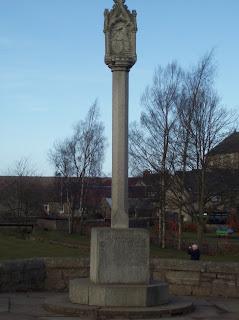Superstitions may be irrational, inexplicable and deeply personal beliefs. They come in all shapes and sizes, from "lucky pants" worn to an interview or football match, to not stepping on cracks in the pavement or avoiding looking at the new moon through glass without turning over the silver in your pocket to ward off bad luck.
Most superstitions seem to involve warding off bad luck by ritual (turning around clockwise three times and/or spitting) or by not bringing something "unlucky" into your life or your home. Preventative ritual might include not walking under ladders or avoiding black cats, or even refusing to have certain plants in your home.
For some people, however, superstition can be a fixed point that is difficult to avoid. Ladies and gentlemen, allow me to present "triskaidekaphobia", otherwise known as "fear of the number thirteen" to those of us fallible mortals who can't actually pronounce the word. Ask me about fear of the number thirteen and I will tell you that I laugh at triskaidekaphobia. So does anyone in earshot when I try to pronounce the word.
In Italy, thirteen is considered to be a lucky number. In many countries it's a number with no special relevance, lucky or unlucky. In fact the number thirteen doesn't seem to have any importance in Britain until the seventeenth century. So how did it get its bad reputation?
Some say that the number thirteen is considered to be unlucky because of its association with the Last Supper. That's also probably where the superstition arose that if thirteen sit down to a meal, the last person to rise from the table will die within the year.
There are also thirteen lunar cycles, and therefore thirteen menstrual cycles in a year. The Christian church also believed that a witches coven needed thirteen members to be effective. Perhaps the association of the number with both the natural and the supernatural is why the number is considered sinister by some and the reason why some buildings don't have a thirteenth floor and some streets don't have a house numbered thirteen.
Triskaidekaphobia is disturbing enough for some people, but when the thirteenth of the month falls on a Friday anxiety levels can go through the roof. The day is named after Frigga, Norse goddess and wife of Odin.
Tradition says that Friday is an unlucky day to start a journey or a venture. Seafarers would often refuse to set sail on a Friday and, even today, many people will try to avoid driving, flying or any unnecessary travel on a Friday. Some people will even stay in bed all day to avoid bad luck. If you're this fearful, what you're suffering from is "parakevidekatriaphobia " or "friggatriskaidekaphobia", but it's easier to say "fear of Friday the thirteenth".
On, the other hand, if you don't mind Friday the thirteenth, there's nothing like a ghost tour to defy the fates...
























